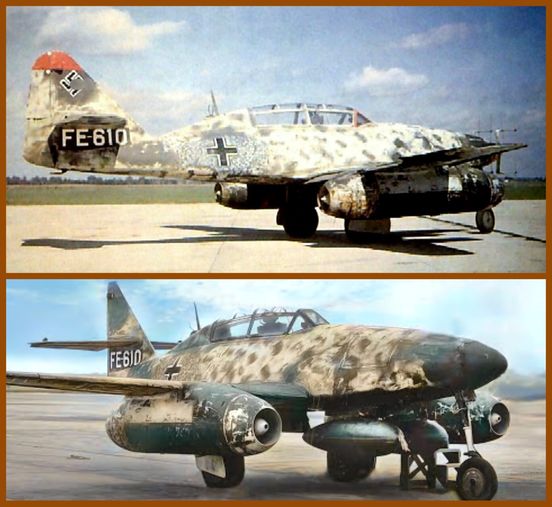The Me 262 was a fearsome weapon in the right hands and was remarkably reliable.
It is sometimes forgotten that the second world war saw a whole host of military jet aircraft take to the skies for the very first time. A lot of these aircraft came from Germany, with the Luftwaffe trying anything it could to stem the Allied onslaught. Arado came up with the radical Ar 234, creating what would become the world’s first jet bomber. Then there was the Heinkel He 162 Salamander, a radical machine that was a bit of a flawed masterpiece, but something that could have given the allies serious cause for concern.
Then we come to the Messerschmitt Me 262. This is perhaps the most well-known jet fighter from World War 2, and certainly the most recognizable from Germany. The Me 262 was probably the most successful of Germany’s jet aircraft, entering service in the Spring of 1944 and remaining in service right up until the end of the war. The type was even flown by the Czech air force up until 1951. Its service life was naturally cut short by the surrender of Germany in 1945, but the Me 262 could have changed the course of the war, had it come sooner, or the war went on longer.
Development Of The 262

The Me 262 can trace its roots back to 1936 when Germany considered creating an aircraft that used the jet engine constructed by Hans Joachim Pabst von Ohain. Following on from the Heinkel 178 test aircraft, the world’s first jet aircraft, the development of the Me 262 began before the war had even started. The design saw an aircraft with a swept-wing design, with two jet engines, one under each wing, and a sleek but bulky fuselage that looked much more modern than anything that was currently in flight. The Me 262 first took flight with its jet engines on July 18th, 1942.

Straight away, the potential in the aircraft was apparent as test flights showed the Me 262 to be much more maneuverable than the likes of the Messerschmitt Bf 109 or Focke Wulf 190. The handling of the jet improved as it got faster, but the biggest issue with the aircraft was unreliability thanks to its engine. The Junkers Jumo 004 and BMW 003 engines were very unreliable, which meant production only started until 1944. Thankfully, unlike with the He 162, there were no major structural issues with the Me 262.
Operational History Of The Me 262
The Me 262 went into service in April 1944, with the first unit being formed at Lechfield, just south of Augsburg. This however was more of a training wing and test wing, to optimize combat tactics with the new aircraft. The Me 262 though certainly took the Allied forces by surprise but losses would soon begin, with a few Me 262s being shot down by both Allied aircraft and anti-aircraft gunfire in the Autumn of 1944. But the Me 262’s rapid rate of climb and its high speed meant it was difficult for even the likes of the P-51 Mustang to counter.

This would allow pilots such as Franz Schall to shoot down a score of Allied aircraft, and Schall himself shot down 17 enemy fighters including 10 P-51s. It was at low speeds and applying throttle where the Me 262 would be vulnerable, which meant in high-speed dogfights, the Me 262 was virtually invulnerable to the Allied forces. The German’s would even fit R4M rockets to underwing racks to attack Boeing B-17 and other large American bombers. Soon, the American’s and British realized the only effective way to counter the Me 262 threat was to attack the aircraft on the ground.
Me 262 Had Limited Impact On The War

Despite the clear advantages the aircraft had over Allied fighters, the Me 262 had little hope of changing the outcome of the war. Me 262s would be built in low-profile production facilities, potentially in forests or underground. Lack of aviation fuel would keep many German aircraft on the ground, including the 262s, and only months after they entered service, Germany signed the unconditional surrender. Evaluations after the war by Britain and America showed the Me 262 to be superior to their own Gloster Meteor’s and P-80 Shooting Stars, showing the potential the aircraft had.
A Turning Point Lost

There is little doubt that the Me 262 could well have been a game-changer. It was faster than any Allied aircraft and was almost untouchable in a dogfight, only becoming an easy victim to well-placed anti-aircraft fire, or in slow turns or take-offs and landings. Political wrangling was partly to blame for its late introduction, with even Goering not believing in the potential of the jet aircraft. But had that not happened, and had Germany been able to keep fighting for even a year longer, things might have been slightly different. The Me 262 was a fearsome weapon in the right hands and was remarkably reliable and well built. It is perhaps a good job, for the sake of the world, that the aircraft didn’t enter service earlier.

